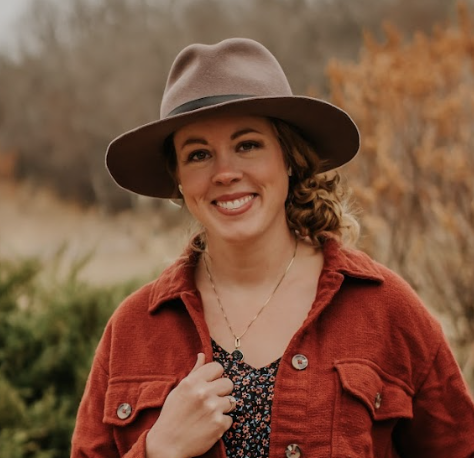5 Foraging Basics For Beginners
Foraging Basics – Foraging, also known as wildcrafting, is the act of gathering wild plants. It was a means of survival in the past. Today you can learn and use this skill as a way to add to your self sufficiency and to connect with the land on a deeper level. Harvesting your own food is a humbling act, and anyone can forage for wild plants, whether you have a green thumb or not!
Wild plants are often more dense in nutrition than cultivated plants. These “weeds” are also often abundant. With the uncertainty in the past few years of food shortages and rising grocery prices, I encourage you to open your perspective to what nature has growing around you already.
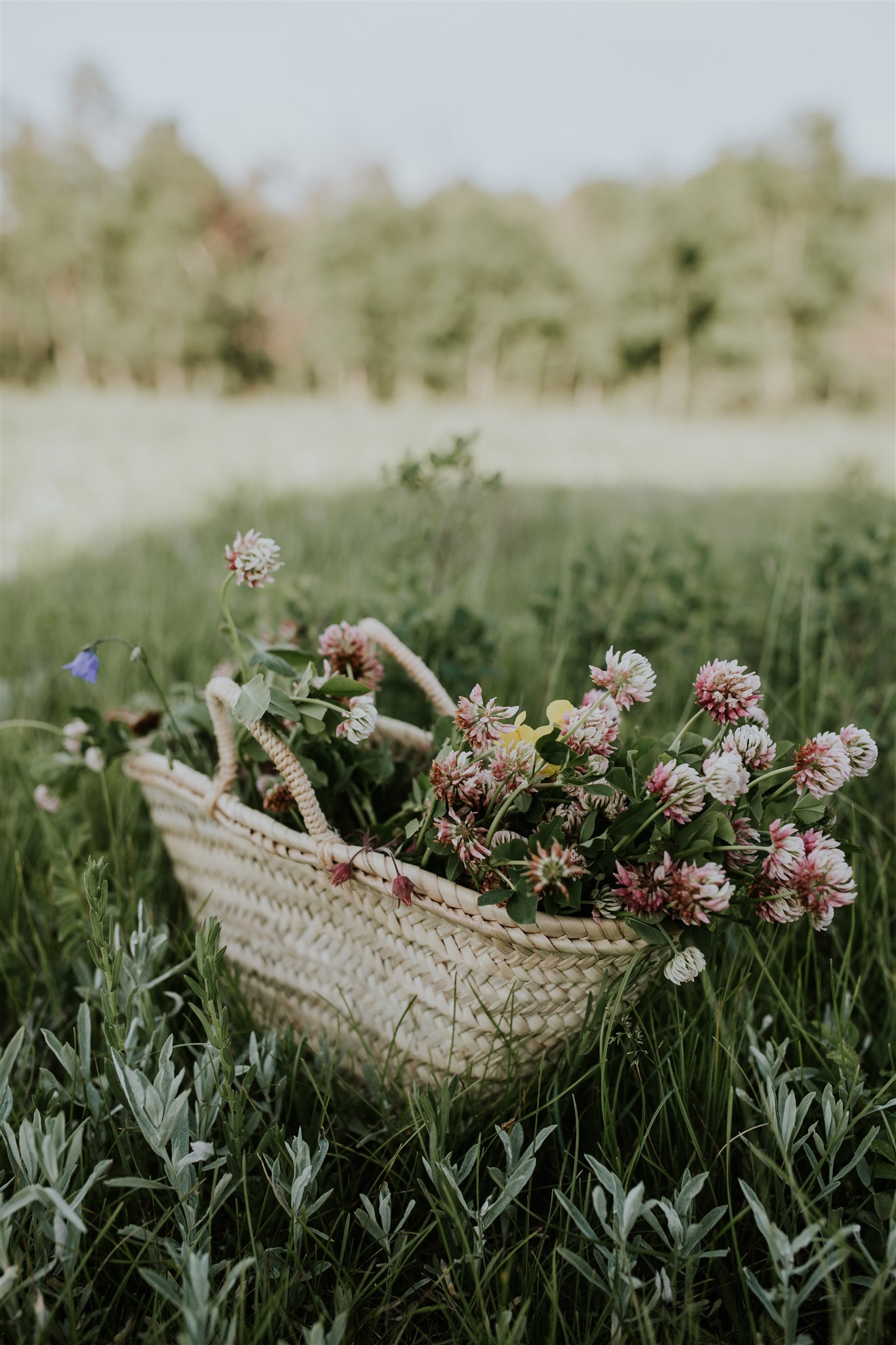
For beginners, foraging can seem intimidating, yet there is so much to learn! My advice: start with the basics. Soon, you’ll find yourself enjoying it so much that you can’t help but layer on new knowledge. Here are my tips to help get you started:
5 Tips To Start Foraging
1. Invest in Plant Identification Books For Your Region
Before venturing out, invest in a book, or two about local plants such as the Lone Pine publishings. Read it, and then take it with you when you’re outside.
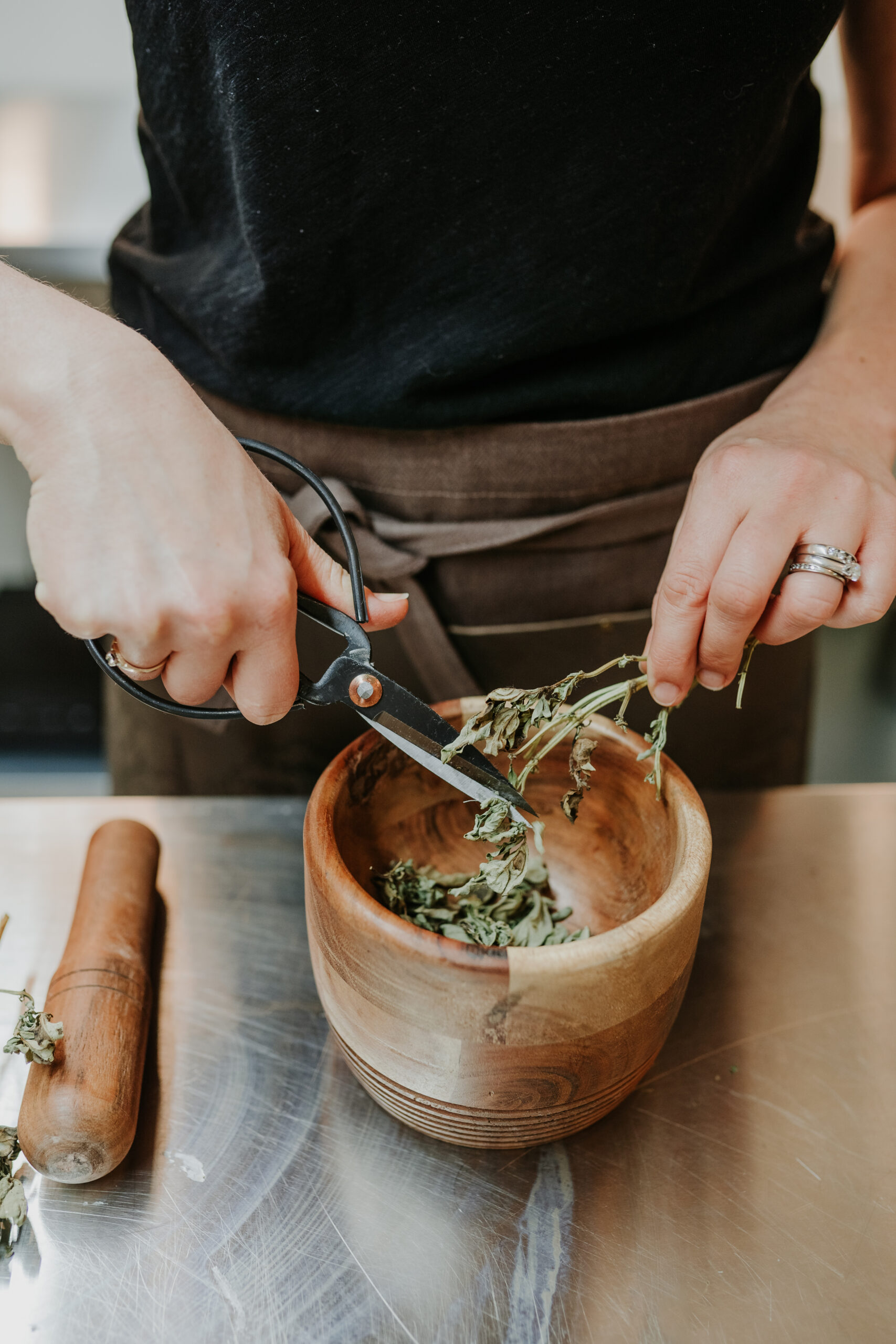
2. Start Foraging in the Spring
In spring, the young tender greens emerge and often this is the ideal time to forage for particular plants before they become too bitter and tough. Dandelion (taraxacum officinale), stinging nettle (urtica dioica), lamb’s quarter (chenopodium album) and chickweed (stellaria media) are all on my list for spring picking for my kitchen. I’ve experimented with young spruce tips in spring for a flavoured syrup, violet leaf for a vinegar infused hair rinse, and my favourite – balsam poplar buds for a ‘balm of gilead’ salve and soap.
3. Educate Yourself One Plant at a Time
Choose one plant to learn about and focus your effort on learning all you can about it. Observe the plant in its different growth stages. What is its relationship to other plants and animals? Is it the first food available for the spring bees? Is it growing in abundance or scarcity? Does it appear healthy? What stage is the ideal time to use it?
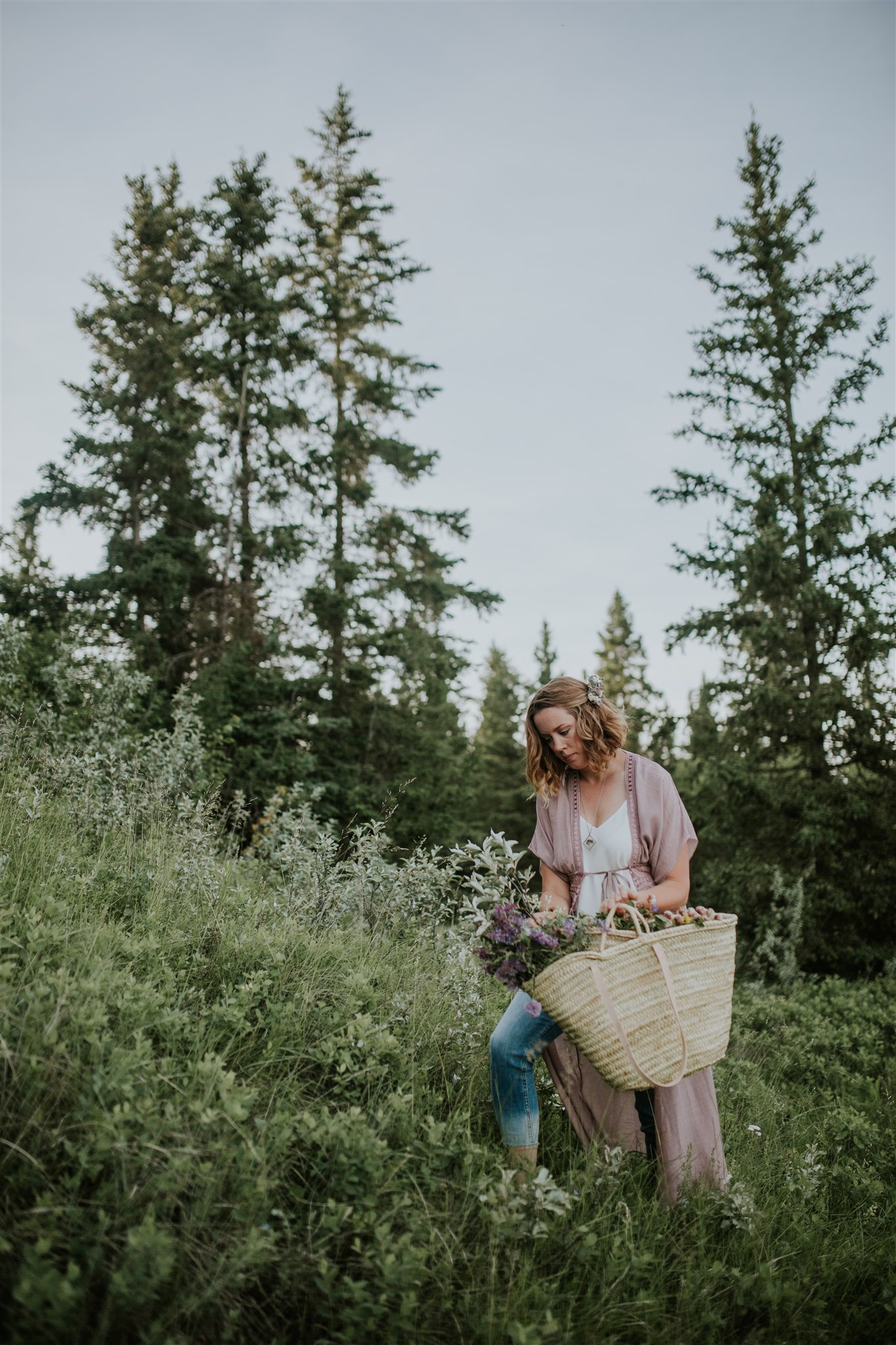
4. Harvest With Awareness
When you harvest, do so with awareness. Take note if the plant could have been sprayed by chemicals or exposed to toxins by runoff – avoid harvesting these. Never take more than a third of the growth. Always have a plan in mind for what you will use the plant for, and never consume anything until you are absolutely certain of the plant’s identification and how to consume it safely.
5. Forage with Intention
After harvesting, know if you plan to use the plant fresh or if you plan to dry it. To preserve the plant to use later, you can use a dehydrator or gather the stems in small bunches to tie and hang to dry. Once thoroughly dried, the garbled leaves can then be stored in a dry and airtight container, out of direct sunlight. Most dried herbs will last 1-2 years if dried and stored properly. Remember to label your
jar with the type of plant and date you harvested it.
These wild superfoods are growing among us and once you learn the plants and their value, you will never look around outside in the same way. Foraging is a worthy skill to learn and pass on to the next generation, while in turn helping to develop a reciprocal relationship with the land. I know from experience that foraging is an excellent way to get your family outdoors together and engage in this learning opportunity for you all while becoming stewards of the environment.
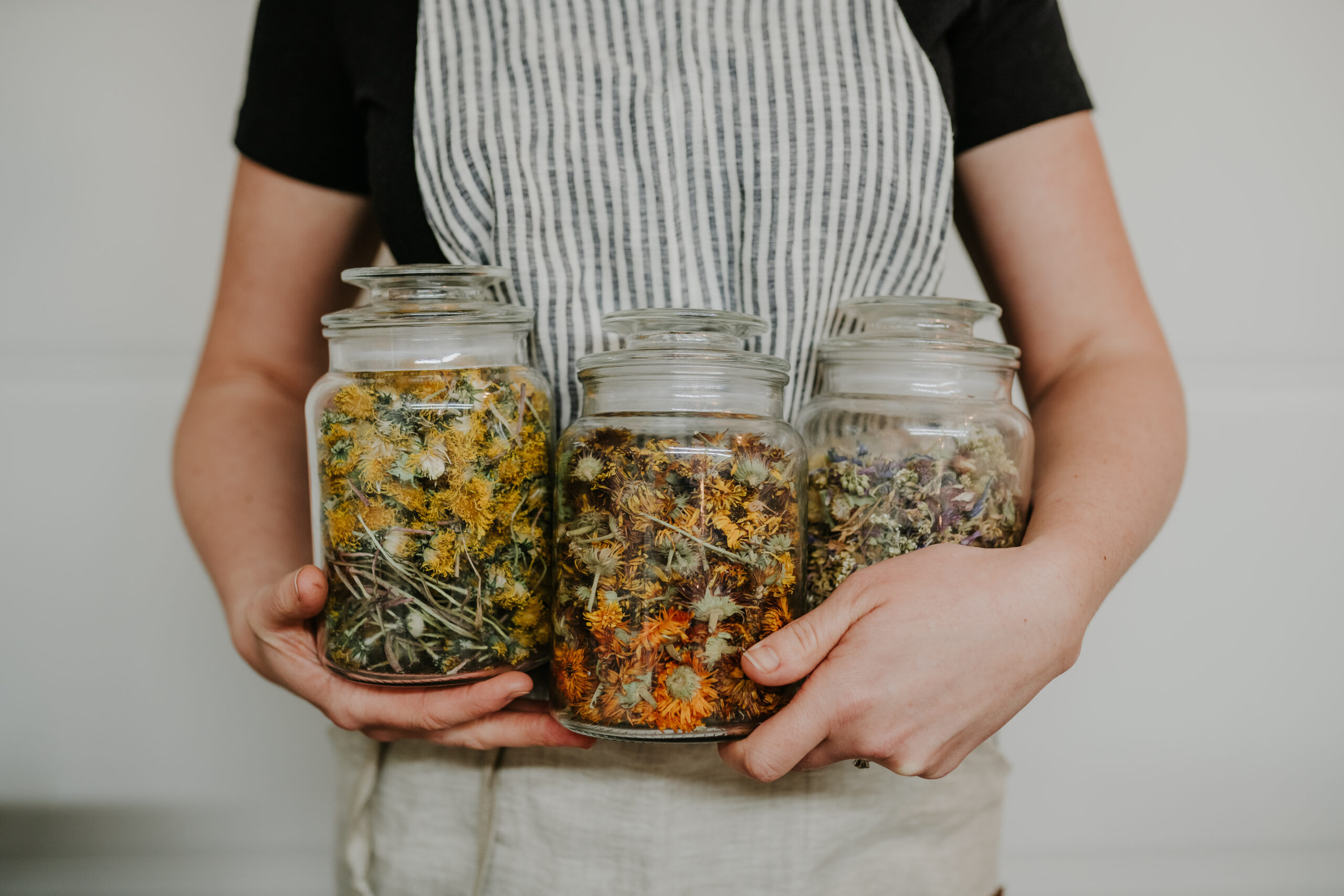
When I strain my wildcrafted herbal oil infusions in my studio, I consider my paternal greatgrandmother using different wild plants for herbal poultices when homesteading in Manitoba. I consider the traditional Indigenous uses for these plants and how they fostered this relationship over thousands of years. I feel gratefulness and creativity as I dream up what modern skin and body products I can create today with our local wildcrafted herbs.
The more years I forage by our farm in central Alberta, the more I marvel at the interdependence among all living things. This curiosity of mine has helped nurture a deeper connection to the natural world that leaves me in wonder and gratitude. As I head outside into this new season, I ponder what plants will catch my eye this spring when I am out learning with my family. I hope you can find inspiration in the same way!
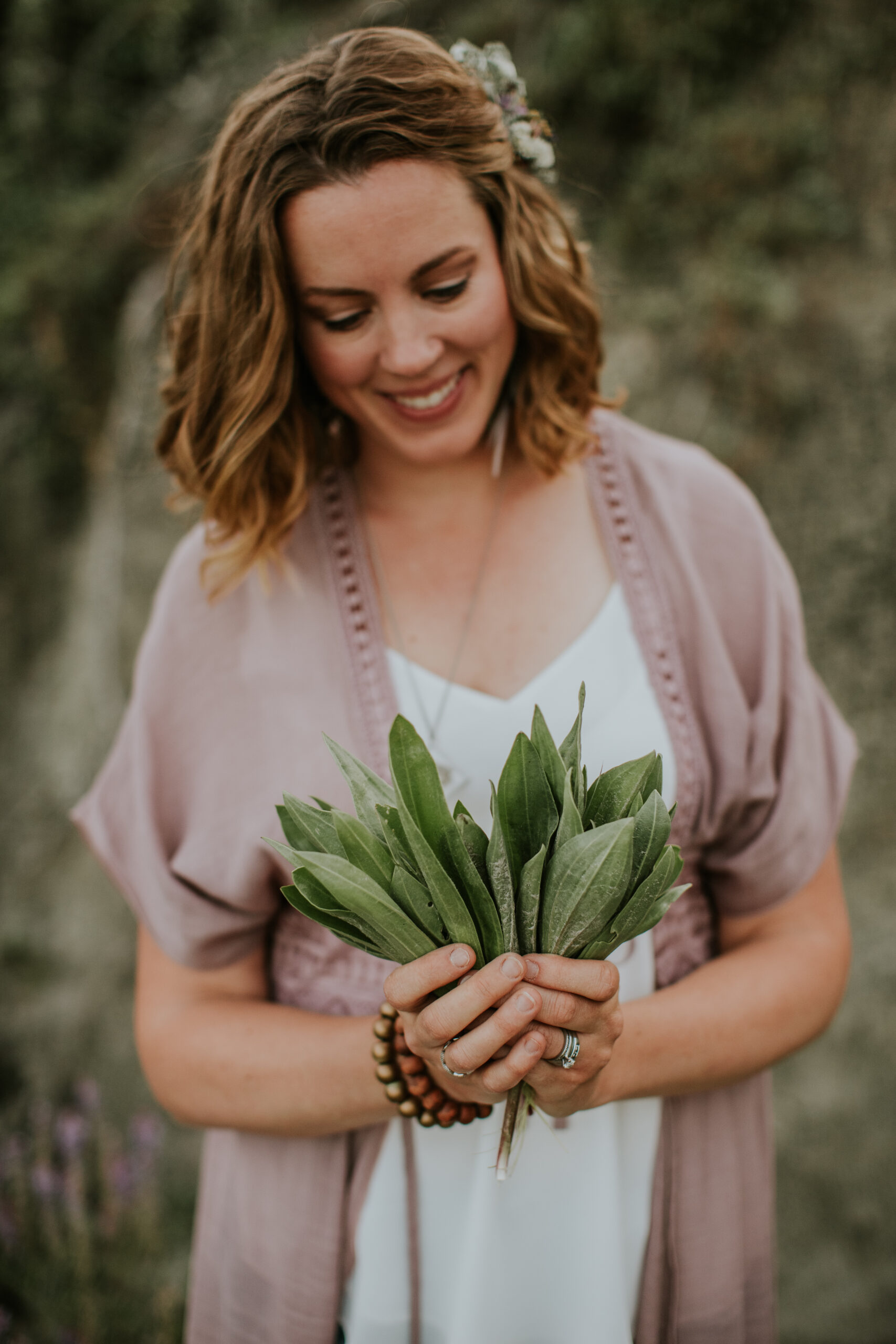
About Jessica
Jessica Mose is the owner, maker and prairie herbalist behind Prairie Soap Shack in central Alberta. Her business takes inspiration from the past and the plants of the prairies to create all-natural skin and body care products for people who want a modern self-care routine infused with a connection to nature and nostalgia of their roots. Jessica loves finding harmony between being an ambitious entrepreneur, while grain farming and raising two young boys, with her husband Adam. She is actively involving herself in community and collaborations, building connections with people and the land around her.
Photography Credit: Lumy + Co.
More Spring Posts

January 24, 2024
Keep Reading
next post
previous post
© 2025 Trailblazher Co. All Rights Reserved.
Legal
